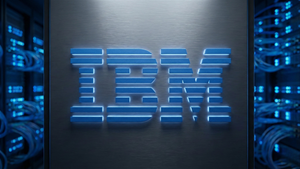
The expanding artificial intelligence (AI) boom has profoundly impacted Broadcom's (NASDAQ: AVGO) stock performance and solidified its critical role within the semiconductor industry as of November 2025. Driven by an insatiable demand for specialized AI hardware and networking solutions, Broadcom has emerged as a foundational enabler of AI infrastructure, leading to robust financial growth and heightened analyst optimism.
Broadcom's shares have experienced a remarkable surge, climbing over 50% year-to-date in 2025 and an impressive 106.3% over the trailing 12-month period, significantly outperforming major market indices and peers. This upward trajectory has pushed Broadcom's market capitalization to approximately $1.65 trillion in 2025. Analyst sentiment is overwhelmingly positive, with a consensus "Strong Buy" rating and average price targets indicating further upside potential. This performance is emblematic of a broader "silicon supercycle" where AI demand is fueling unprecedented growth and reshaping the landscape, with the global semiconductor industry projected to reach approximately $697 billion in sales in 2025, a 11% year-over-year increase, and a trajectory towards a staggering $1 trillion by 2030, largely powered by AI.
Broadcom's Technical Prowess: Powering the AI Revolution from the Core
Broadcom's strategic advancements in AI are rooted in two primary pillars: custom AI accelerators (ASICs/XPUs) and advanced networking infrastructure. The company plays a critical role as a design and fabrication partner for major hyperscalers, providing the "silicon architect" expertise behind their in-house AI chips. This includes co-developing Meta's (NASDAQ: META) MTIA training accelerators and securing contracts with OpenAI for two generations of high-end AI ASICs, leveraging advanced 3nm and 2nm process nodes with 3D SOIC advanced packaging.
A cornerstone of Broadcom's custom silicon innovation is its 3.5D eXtreme Dimension System in Package (XDSiP) platform, designed for ultra-high-performance AI and High-Performance Computing (HPC) workloads. This platform enables the integration of over 6000mm² of 3D-stacked silicon with up to 12 High-Bandwidth Memory (HBM) modules. The XDSiP utilizes TSMC's (NYSE: TSM) CoWoS-L packaging technology and features a groundbreaking Face-to-Face (F2F) 3D stacking approach via hybrid copper bonding (HCB). This F2F method significantly enhances inter-die connectivity, offering up to 7 times more signal connections, shorter signal routing, a 90% reduction in power consumption for die-to-die interfaces, and minimized latency within the 3D stack. The lead F2F 3.5D XPU product, set for release in 2026, integrates four compute dies (fabricated on TSMC's cutting-edge N2 process technology), one I/O die, and six HBM modules. Furthermore, Broadcom is integrating optical chiplets directly with compute ASICs using CoWoS packaging, enabling 64 links off the chip for high-density, high-bandwidth communication. A notable "third-gen XPU design" developed by Broadcom for a "large consumer AI company" (widely understood to be OpenAI) is reportedly larger than Nvidia's (NASDAQ: NVDA) Blackwell B200 AI GPU, featuring 12 stacks of HBM memory.
Beyond custom compute ASICs, Broadcom's high-performance Ethernet switch silicon is crucial for scaling AI infrastructure. The StrataXGS Tomahawk 5, launched in 2022, is the industry's first 51.2 Terabits per second (Tbps) Ethernet switch chip, offering double the bandwidth of any other switch silicon at its release. It boasts ultra-low power consumption, reportedly under 1W per 100Gbps, a 95% reduction from its first generation. Key features for AI/ML include high radix and bandwidth, advanced buffering for better packet burst absorption, cognitive routing, dynamic load balancing, and end-to-end congestion control. The Jericho3-AI (BCM88890), introduced in April 2023, is a 28.8 Tbps Ethernet switch designed to reduce network time in AI training, capable of interconnecting up to 32,000 GPUs in a single cluster. More recently, the Jericho 4, announced in August 2025 and built on TSMC's 3nm process, delivers an impressive 51.2 Tbps throughput, introducing HyperPort technology for improved link utilization and incorporating High-Bandwidth Memory (HBM) for deep buffering.
Broadcom's approach contrasts with Nvidia's general-purpose GPU dominance by focusing on custom ASICs and networking solutions optimized for specific AI workloads, particularly inference. While Nvidia's GPUs excel in AI training, Broadcom's custom ASICs offer significant advantages in terms of cost and power efficiency for repetitive, predictable inference tasks, claiming up to 75% lower costs and 50% lower power consumption. Broadcom champions the open Ethernet ecosystem as a superior alternative to proprietary interconnects like Nvidia's InfiniBand, arguing for higher bandwidth, higher radix, lower power consumption, and a broader ecosystem. The company's collaboration with OpenAI, announced in October 2025, for co-developing and deploying custom AI accelerators and advanced Ethernet networking capabilities, underscores the integrated approach needed for next-generation AI clusters.
Industry Implications: Reshaping the AI Competitive Landscape
Broadcom's AI advancements are profoundly reshaping the competitive landscape for AI companies, tech giants, and startups alike. Hyperscale cloud providers and major AI labs like Google (NASDAQ: GOOGL), Meta (NASDAQ: META), and OpenAI are the primary beneficiaries. These companies are leveraging Broadcom's expertise to design their own specialized AI accelerators, reducing reliance on single suppliers and achieving greater cost efficiency and customized performance. OpenAI's landmark multi-year partnership with Broadcom, announced in October 2025, to co-develop and deploy 10 gigawatts of OpenAI-designed custom AI accelerators and networking systems, with deployments beginning in mid-2026 and extending through 2029, is a testament to this trend.
This strategic shift enables tech giants to diversify their AI chip supply chains, lessening their dependency on Nvidia's dominant GPUs. While Nvidia (NASDAQ: NVDA) still holds a significant market share in general-purpose AI GPUs, Broadcom's custom ASICs provide a compelling alternative for specific, high-volume AI workloads, particularly inference. For hyperscalers and major AI labs, Broadcom's custom chips can offer more efficiency and lower costs in the long run, especially for tailored workloads, potentially being 50% more efficient per watt for AI inference. Furthermore, by co-designing chips with Broadcom, companies like OpenAI gain enhanced control over their hardware, allowing them to embed insights from their frontier models directly into the silicon, unlocking new levels of capability and optimization.
Broadcom's leadership in AI networking solutions, such as its Tomahawk and Jericho switches and co-packaged optics, provides the foundational infrastructure necessary for these companies to scale their massive AI clusters efficiently, offering higher bandwidth and lower latency. This focus on open-standard Ethernet solutions, EVPN, and BGP for unified network fabrics, along with collaborations with companies like Cisco (NASDAQ: CSCO), could simplify multi-vendor environments and disrupt older, proprietary networking approaches. The trend towards vertical integration, where large AI players optimize their hardware for their unique software stacks, is further encouraged by Broadcom's success in enabling custom chip development, potentially impacting third-party chip and hardware providers who offer less customized solutions.
Broadcom has solidified its position as a "strong second player" after Nvidia in the AI chip market, with some analysts even predicting its momentum could outpace Nvidia's in 2025 and 2026, driven by its tailored solutions and hyperscaler collaborations. The company is becoming an "indispensable force" and a foundational architect of the AI revolution, particularly for AI supercomputing infrastructure, with a comprehensive portfolio spanning custom AI accelerators, high-performance networking, and infrastructure software (VMware). Broadcom's strategic partnerships and focus on efficiency and customization provide a critical competitive edge, with its AI revenue projected to surge, reaching approximately $6.2 billion in Q4 2025 and potentially $100 billion in 2026.
Wider Significance: A New Era for AI Infrastructure
Broadcom's AI-driven growth and technological advancements as of November 2025 underscore its critical role in building the foundational infrastructure for the next wave of AI. Its innovations fit squarely into a broader AI landscape characterized by an increasing demand for specialized, efficient, and scalable computing solutions. The company's leadership in custom silicon, high-speed networking, and optical interconnects is enabling the massive scale and complexity of modern AI systems, moving beyond the reliance on general-purpose processors for all AI workloads.
This marks a significant trend towards the "XPU era," where workload-specific chips are becoming paramount. Broadcom's solutions are critical for hyperscale cloud providers that are building massive AI data centers, allowing them to diversify their AI chip supply chains beyond a single vendor. Furthermore, Broadcom's advocacy for open, scalable, and power-efficient AI infrastructure, exemplified by its work with the Open Compute Project (OCP) Global Summit, addresses the growing demand for sustainable AI growth. As AI models grow, the ability to connect tens of thousands of servers across multiple data centers without performance loss becomes a major challenge, which Broadcom's high-performance Ethernet switches, optical interconnects, and co-packaged optics are directly addressing. By expanding VMware Cloud Foundation with AI ReadyNodes, Broadcom is also facilitating the deployment of AI workloads in diverse environments, from large data centers to industrial and retail remote sites, pushing "AI everywhere."
The overall impacts are substantial: accelerated AI development through the provision of essential backbone infrastructure, significant economic contributions (with AI potentially adding $10 trillion annually to global GDP), and a diversification of the AI hardware supply chain. Broadcom's focus on power-efficient designs, such as Co-packaged Optics (CPO), is crucial given the immense energy consumption of AI clusters, supporting more sustainable scaling. However, potential concerns include a high customer concentration risk, with a significant portion of AI-related revenue coming from a few hyperscale providers, making Broadcom susceptible to shifts in their capital expenditure. Valuation risks and market fluctuations, along with geopolitical and supply chain challenges, also remain.
Broadcom's current impact represents a new phase in AI infrastructure development, distinct from earlier milestones. Previous AI breakthroughs were largely driven by general-purpose GPUs. Broadcom's ascendancy signifies a shift towards custom ASICs, optimized for specific AI workloads, becoming increasingly important for hyperscalers and large AI model developers. This specialization allows for greater efficiency and performance for the massive scale of modern AI. Moreover, while earlier milestones focused on algorithmic advancements and raw compute power, Broadcom's contributions emphasize the interconnection and networking capabilities required to scale AI to unprecedented levels, enabling the next generation of AI model training and inference that simply wasn't possible before. The acquisition of VMware and the development of AI ReadyNodes also highlight a growing trend of integrating hardware and software stacks to simplify AI deployment in enterprise and private cloud environments.
Future Horizons: Unlocking AI's Full Potential
Broadcom is poised for significant AI-driven growth, profoundly impacting the semiconductor industry through both near-term and long-term developments. In the near-term (late 2025 – 2026), Broadcom's growth will continue to be fueled by the insatiable demand for AI infrastructure. The company's custom AI accelerators (XPUs/ASICs) for hyperscalers like Google (NASDAQ: GOOGL) and Meta (NASDAQ: META), along with a reported $10 billion XPU rack order from a fourth hyperscale customer (likely OpenAI), signal continued strong demand. Its AI networking solutions, including the Tomahawk 6, Tomahawk Ultra, and Jericho4 Ethernet switches, combined with third-generation TH6-Davisson Co-packaged Optics (CPO), will remain critical for handling the exponential bandwidth demands of AI. Furthermore, Broadcom's expansion of VMware Cloud Foundation (VCF) with AI ReadyNodes aims to simplify and accelerate the adoption of AI in private cloud environments.
Looking further out (2027 and beyond), Broadcom aims to remain a key player in custom AI accelerators. CEO Hock Tan projected AI revenue to grow from $20 billion in 2025 to over $120 billion by 2030, reflecting strong confidence in sustained demand for compute in the generative AI race. The company's roadmap includes driving 1.6T bandwidth switches for sampling and scaling AI clusters to 1 million XPUs on Ethernet, which is anticipated to become the standard for AI networking. Broadcom is also expanding into Edge AI, optimizing nodes for running VCF Edge in industrial, retail, and other remote applications, maximizing the value of AI in diverse settings. The integration of VMware's enterprise AI infrastructure into Broadcom's portfolio is expected to broaden its reach into private cloud deployments, creating dual revenue streams from both hardware and software.
These technologies are enabling a wide range of applications, from powering hyperscale data centers and enterprise AI solutions to supporting AI Copilot PCs and on-device AI, boosting semiconductor demand for new product launches in 2025. Broadcom's chips and networking solutions will also provide foundational infrastructure for the exponential growth of AI in healthcare, finance, and industrial automation. However, challenges persist, including intense competition from NVIDIA (NASDAQ: NVDA) and AMD (NASDAQ: AMD), customer concentration risk with a reliance on a few hyperscale clients, and supply chain pressures due to global chip shortages and geopolitical tensions. Maintaining the rapid pace of AI innovation also demands sustained R&D spending, which could pressure free cash flow.
Experts are largely optimistic, predicting strong revenue growth, with Broadcom's AI revenues expected to grow at a minimum of 60% CAGR, potentially accelerating in 2026. Some analysts even suggest Broadcom could increasingly challenge Nvidia in the AI chip market as tech giants diversify. Broadcom's market capitalization, already surpassing $1 trillion in 2025, could reach $2 trillion by 2026, with long-term predictions suggesting a potential $6.1 trillion by 2030 in a bullish scenario. Broadcom is seen as a "strategic buy" for long-term investors due to its strong free cash flow, key partnerships, and focus on high-margin, high-growth segments like edge AI and high-performance computing.
A Pivotal Force in AI's Evolution
Broadcom has unequivocally solidified its position as a central enabler of the artificial intelligence revolution, demonstrating robust AI-driven growth and significantly influencing the semiconductor industry as of November 2025. The company's strategic focus on custom AI accelerators (XPUs) and high-performance networking solutions, coupled with the successful integration of VMware, underpins its remarkable expansion. Key takeaways include explosive AI semiconductor revenue growth, the pivotal role of custom AI chips for hyperscalers (including a significant partnership with OpenAI), and its leadership in end-to-end AI networking solutions. The VMware integration, with the introduction of "VCF AI ReadyNodes," further extends Broadcom's AI capabilities into private cloud environments, fostering an open and extensible ecosystem.
Broadcom's AI strategy is profoundly reshaping the semiconductor landscape by driving a significant industry shift towards custom silicon for AI workloads, promoting vertical integration in AI hardware, and establishing Ethernet as central to large-scale AI cluster architectures. This redefines leadership within the semiconductor space, prioritizing agility, specialization, and deep integration with leading technology companies. Its contributions are fueling a "silicon supercycle," making Broadcom a key beneficiary and driver of unprecedented growth.
In AI history, Broadcom's contributions in 2025 mark a pivotal moment where hardware innovation is actively shaping the trajectory of AI. By enabling hyperscalers to develop and deploy highly specialized and efficient AI infrastructure, Broadcom is directly facilitating the scaling and advancement of AI models. The strategic decision by major AI innovators like OpenAI to partner with Broadcom for custom chip development underscores the increasing importance of tailored hardware solutions for next-generation AI, moving beyond reliance on general-purpose processors. This trend signifies a maturing AI ecosystem where hardware customization becomes critical for competitive advantage and operational efficiency.
In the long term, Broadcom is strongly positioned to be a dominant force in the AI hardware landscape, with AI-related revenue projected to reach $10 billion by calendar 2027 and potentially scale to $40-50 billion per year in 2028 and beyond. The company's strategic commitment to reinvesting in its AI business, rather than solely pursuing M&A, signals a sustained focus on organic growth and innovation. The ongoing expansion of VMware Cloud Foundation with AI-ready capabilities will further embed Broadcom into enterprise private cloud AI deployments, diversifying its revenue streams and reducing dependency on a narrow set of hyperscale clients over time. Broadcom's approach to custom silicon and comprehensive networking solutions is a fundamental transformation, likely to shape how AI infrastructure is built and deployed for years to come.
In the coming weeks and months, investors and industry watchers should closely monitor Broadcom's Q4 FY2025 earnings report (expected mid-December) for further clarity on AI semiconductor revenue acceleration and VMware integration progress. Keep an eye on announcements regarding the commencement of custom AI chip shipments to OpenAI and other hyperscalers in early 2026, as these ramp up production. The competitive landscape will also be crucial to observe as NVIDIA (NASDAQ: NVDA) and AMD (NASDAQ: AMD) respond to Broadcom's increasing market share in custom AI ASICs and networking. Further developments in VCF AI ReadyNodes and the adoption of VMware Private AI Services, expected to be a standard component of VCF 9.0 in Broadcom's Q1 FY26, will also be important. Finally, the potential impact of the recent end of the Biden-era "AI Diffusion Rule" on Broadcom's serviceable market bears watching.
This content is intended for informational purposes only and represents analysis of current AI developments.
TokenRing AI delivers enterprise-grade solutions for multi-agent AI workflow orchestration, AI-powered development tools, and seamless remote collaboration platforms.
For more information, visit https://www.tokenring.ai/.





